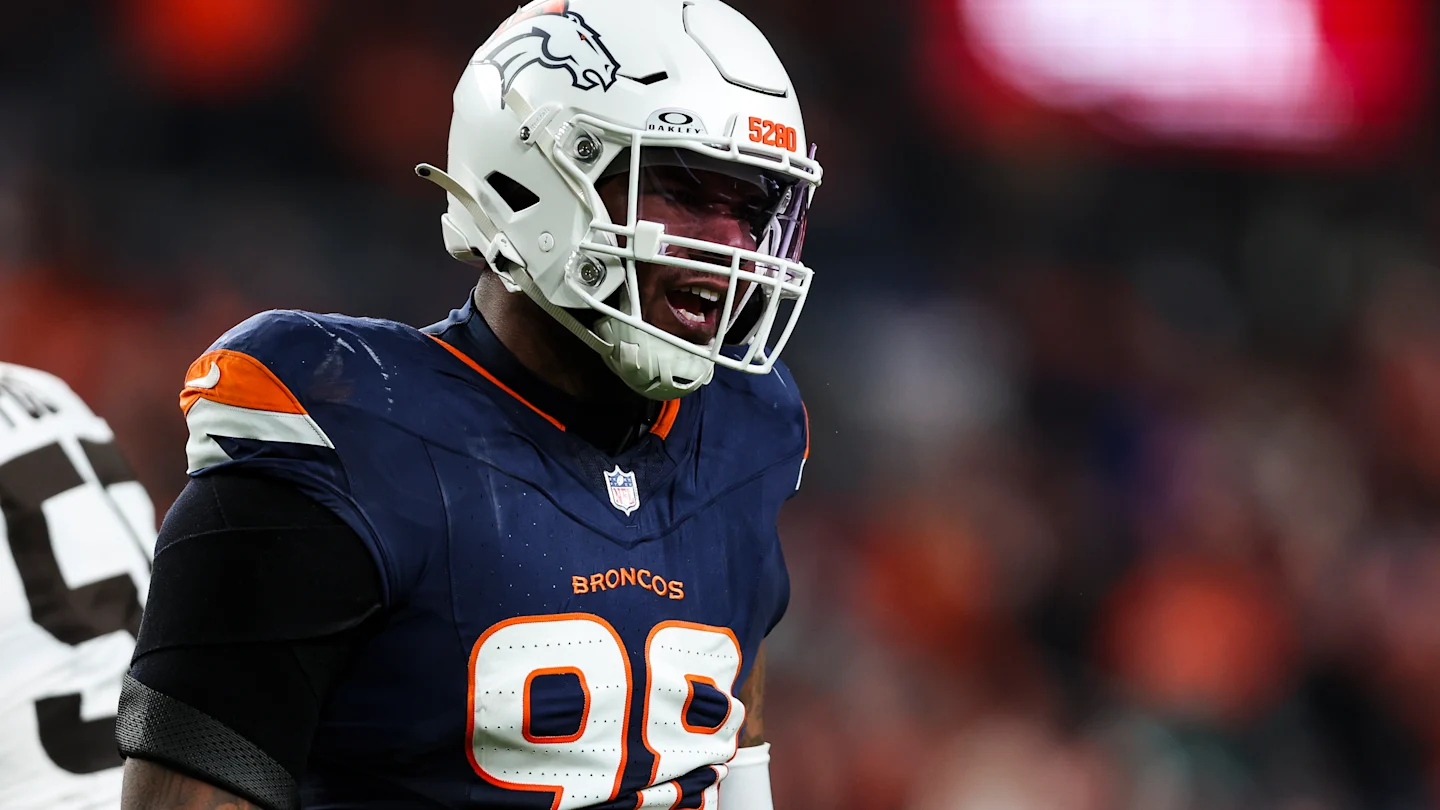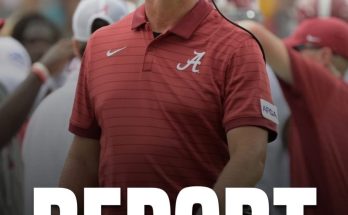The Denver Broncos, a franchise with a storied history and high expectations heading into the 2025 NFL season, experienced what many anticipated but hoped to avoid during their recent offseason training activities (OTAs): a no-show by a key player that, while expected, still feels like a blow to the team’s preparations and momentum. OTAs are a critical period for any NFL team. They provide players and coaches an opportunity to get on the same page, build chemistry, and begin installing the schemes and fundamentals that will carry them through a grueling season. Missing a key contributor during this phase can impact not only the on-field work but also the locker room dynamics and overall morale. For the Broncos, this no-show represents more than just an absence in practice—it underscores ongoing challenges and questions about the team’s readiness to contend in a fiercely competitive AFC West division.
The player in question is one of Denver’s most important defensive assets, a safety whose presence in the secondary has been vital to the Broncos’ defensive identity. While the team and fans alike hoped the offseason would bring more stability and commitment, his absence during the OTAs brings to light the complexities of player availability, contract negotiations, personal priorities, and sometimes unresolved frustrations. It is worth noting that such absences are not unusual in the NFL, especially during OTAs, which are voluntary by nature and typically unpaid. However, when a player of significant influence is not present, it inevitably becomes a story, reflecting larger tensions or issues beneath the surface.
In recent years, the Broncos’ defense has relied heavily on versatile and intelligent players in the secondary to counteract the high-octane offenses in their division and the league at large. The absence of this particular safety disrupts the early installation of defensive schemes, especially those that require seamless communication and trust among the defensive backs and linebackers. Defensive coordination is all about timing and anticipation, qualities that are honed through repetition and on-field experience together. Without full attendance, the team risks falling behind in the development of that all-important cohesion.
Adding to the frustration is the fact that OTAs are a rare window of opportunity to assess the team’s younger talent in meaningful practice settings. For the Broncos, this no-show creates a gap in leadership for the younger safeties and defensive backs trying to find their footing. These younger players rely on veteran presence not only for technical guidance but also for understanding the culture and expectations within the team. The missing veteran’s absence means a critical mentor is not available, potentially slowing down the developmental curve of promising prospects. This dynamic puts additional pressure on the coaching staff, who must find ways to accelerate learning and chemistry in the absence of a key voice.
There are a variety of reasons that could have contributed to the player’s decision not to attend OTAs. Contract negotiations or dissatisfaction with the current deal often play a significant role. The NFL offseason has increasingly become a time of strategic leverage for players and agents, who sometimes use OTAs or training camp attendance as a bargaining chip in contract talks. The Broncos, who have been managing salary cap challenges and roster balancing acts, might be in the middle of delicate conversations with this safety’s representatives. Until a satisfactory resolution is found, the player’s focus may remain elsewhere, and his absence serves as a tangible reminder of those ongoing negotiations.
Personal reasons and health considerations are also often factors behind no-shows. In the wake of the pandemic and an evolving approach to player wellness, many athletes prioritize rest and recovery more deliberately, especially during voluntary sessions. There could be lingering injury concerns, or the player might be managing physical therapy away from the team facility. While these are understandable circumstances, the optics of missing OTAs do little to quell the speculation around commitment and focus, particularly when the team’s competitive window is narrow, and every day counts.
It is important to understand the fine balance the Broncos must maintain between respecting player autonomy and enforcing a professional culture where accountability and dedication are paramount. The franchise, under the leadership of its coaching staff and front office, has emphasized building a team-oriented culture—one where every player feels invested in a collective goal. Yet, instances like this no-show challenge that ideal, forcing the organization to navigate a path that keeps the player engaged without alienating others who show up day in and day out to give their best effort. The team must walk a tightrope to ensure this absence does not fracture locker room chemistry or undermine the message being sent to the rest of the roster.
Despite the setback, the Broncos are attempting to stay positive and focus on the bigger picture. The coaching staff is adjusting practice plans, ensuring that other safeties and defensive backs get ample reps, and continuing to evaluate new schemes that might accommodate different personnel groupings. The team also is likely using this time to reinforce individual accountability and mental toughness among all players, emphasizing that while one absence is unfortunate, the collective effort is what ultimately drives success.
From a fan perspective, reactions have been mixed. There is a level of understanding that OTAs are voluntary and that players have valid reasons for their decisions. Many fans recognize the complicated realities of NFL contracts and the physical toll on players. At the same time, there is disappointment and concern that the Broncos might be losing momentum early in the offseason. The team is trying to build excitement for the 2025 campaign, and every bit of unity and preparation counts. When a star defensive player opts out of crucial early sessions, it casts a shadow of doubt and fuels questions about the overall commitment to the team’s goals.
Looking ahead, the hope is that this absence is temporary and that the player will rejoin the team soon, ideally before training camp begins. The regular season demands full strength and cohesion, and the Broncos know they will need every weapon on the field if they want to compete for a playoff spot and beyond. Veteran players typically come back to the fold once contract situations stabilize or personal issues resolve, and the Broncos will be hoping that this safety follows that familiar pattern.
The Broncos’ situation is not unique in the NFL, where offseason no-shows, holdouts, or limited attendance are sometimes part of the negotiation and preparation landscape. What sets teams apart is how they respond to these challenges. For Denver, the key will be maintaining focus on team goals, continuing to build depth across the roster, and fostering an environment that encourages players to recommit fully when the time comes. The coaching staff’s ability to adapt and motivate will be put to the test, but the organization’s leadership has expressed confidence that they can weather this temporary hurdle.
The absence also sheds light on broader issues facing NFL teams today, such as player empowerment, contract negotiations becoming public dramas, and the increased emphasis on mental and physical health. Teams are forced to rethink traditional methods of holding players accountable and must find more nuanced ways to manage rosters and player relations. The Broncos’ no-show story is a microcosm of these larger dynamics, revealing how modern NFL teams must balance competing interests in an ever-evolving professional sports environment.
For the Broncos, who have been working to rebuild a competitive roster after several seasons of mixed results, every practice, every drill, every moment counts. The no-show during OTAs, though expected, interrupts a carefully constructed rhythm. Still, the team’s ability to remain resilient and focused during this period will speak volumes about their potential to overcome adversity. Success in the NFL often hinges on how teams respond to setbacks, and Denver is now facing that test.
In conclusion, the Denver Broncos’ experience with this expected but unlucky no-show during OTAs is a reminder of the complexities involved in building an NFL team. While disappointing, it is not insurmountable. The franchise, its coaching staff, and players must channel their energy into preparation, adaptation, and unity. The absence of a key safety during these early sessions highlights ongoing challenges related to contracts, health, and player focus but also underscores the importance of leadership and culture in navigating those issues. As the Broncos continue their offseason journey, fans and analysts alike will be watching closely to see how this story unfolds, hoping the team can reassemble fully and enter the 2025 season with all pieces in place, ready to compete at the highest level.



